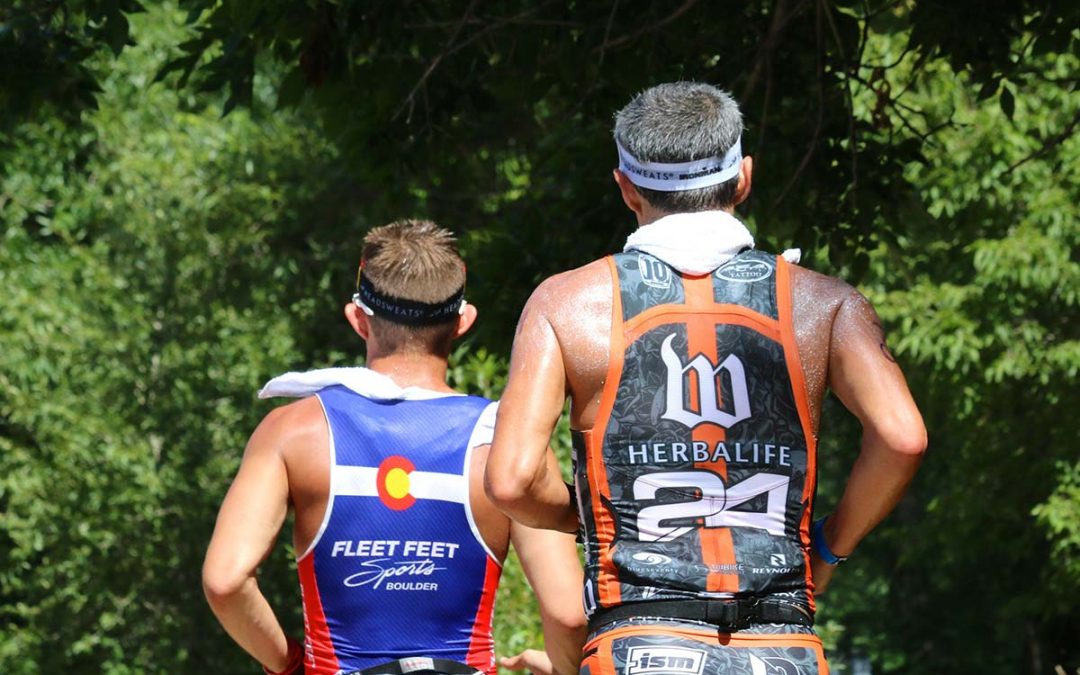How to Measure Sweat Rate During Exercise
A triathlon client who is training for a summer IRONMAN Triathlon® recently asked me for an easy way to caluclate sweat rate.
I started to write a long blog post about how to estimate sweat rate during a training session by measuring the change in body weight as a result of sweating and fluid replacement then discovered Gatorade Sport Science Institute’s online Fluid Loss Calculator. Simply follow the instructions then plug your numbers into the calculator.
Why Do We Even Care About Sweat Rate?
On a fundamental level, we care about sweat rate because most of the body is water. Water makes up an even greater percentage of muscle and blood.  As such, excess losses in sweat (water):
As such, excess losses in sweat (water):
- Impair muscle function,
- Increase blood viscosity (making it more difficult for the heart to pump the blood) and
- Reduce the body’s ability to cool itself through sweat.
Negative effects on performance have been demonstrated with only modest (<2%) dehydration.
What Factors Affect Sweat Rate During Exercise?
There are a number of different factors that affect sweat rate during exercise including athlete size (large athletes sweat more) and exercise intensity. Sweat rate is also highly variable depending on the individual.
As such, it’s important to take these considerations into account when performing your sweat rate test:
- Tie to the time of day of when you’ll be testing and racing. For example, if you’re racing an IRONMAN, your run will be in the afternoon so much hotter than an early morning run so better to test during an afternoon run to simulate sweat rate on the run during the race.
- Repeat tests in different conditions over time. Note the temperature, humidity, duration and effort of the workout. This will give you an idea of how your sweat rate changes in different conditions.
- Perform the test in a duration appropriate for your goal race. For example, an IRONMAN athlete would want to perform the test on longer rides (>3 hours).
Keep it in mind that your estimated sweat rate is simply a guideline to put you in the right ball park. If conditions are excessively hot and humid (for example), you will need to consume more fluids.
What to Do After Your Sweat Rate Test
In addition to performing multiple tests over a period of time (e.g. every 2 weeks during long rides and runs), I’d recommend converting your sweat rate from a number (e.g. 32 ounces per hour) to a known quantity that you can use during your race (e.g. 24 oz. water bottle). For example, a 32 oz per hour sweat rate equates to 1 ⅓ water bottles per hour. A reasonable guideline is to try to replace 90% of fluids lost during exercise.
Keep in mind that including electrolytes with your fluids are necessary for proper hydration. Krista Schultz’s article “How to Replace Your Electrolytes,” which appeared in the September 2011 issue of Triathlete Magazine, offers guidelines for electrolyte replacement.
Happy training,
David B. Glover, MSE, MS, CSCS
IRONMAN Certified Coach
Author of Full Time and Sub-Nine: Fitting Iron Distance Training into Everyday Life (eBook format)


